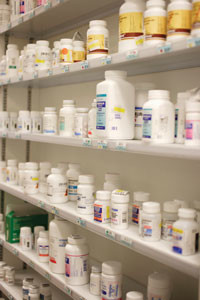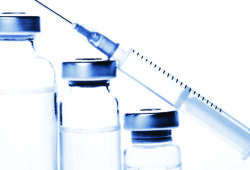In November 2015, pharmaceutical giants Pfizer and Allergan announced they were merging to form a $152 billion company. The new company’s portfolio will include popular drugs such as Botox, Viagra, the Prevnar pneumonia vaccine, and treatments for conditions including Alzheimer’s and rheumatoid arthritis. While the company will be managed by Pfizer’s U.S.-based leadership, it will be reorganized in Ireland, Allergan’s home base, to avoid paying higher corporate taxes in the United States. The combined company expects initial annual sales of more than $65 billion. While such deals are likely to build profits for the drug companies, pharmaceutical M&A can create difficulties for an already cash-strapped healthcare industry that needs access to affordable drugs.
The Pfizer-Allergan deal has drawn increased attention because of the tax implications of moving a U.S. company abroad, but merger and acquisition (M&A) activity has become the norm in the healthcare field, especially among pharmaceutical companies. And as more drug companies merge and overtake each other, healthcare facilities and pharmaceutical customers are feeling the squeeze. With fewer companies in the marketplace, competition is limited, driving higher prices and drug scarcity.
The Pharmaceutical M&A Surge
“Generally, pharmaceutical companies merge for the same reasons that other companies do,” says Marcus Dortch, former director of Clinical Pharmacy Services at HealthTrust. “The reasons include eliminating competition, growing their book of business and diversifying their portfolios.”
For instance, a large pharmaceutical company recently wanted to quickly grow its infectious diseases portfolio, Dortch explains. Instead of investing time and significant funds into research and development (R&D) efforts, the company simply purchased a smaller company that had a history of success in bringing antibiotics to the market. Often, larger pharmaceutical firms will purchase smaller innovative ones that are actively researching promising new drugs with a high likelihood of approval and uptake.
“Generally, pharmaceutical companies merge for the same reasons that other companies do … to eliminate competition, to grow their book of business and to diversify their portfolios.”
— Marcus Dortch, former director of Clinical Pharmacy Services at HealthTrust
In addition, the process of acquiring a patent for a new drug has become slower and more onerous, so simply acquiring other companies with new drugs in the pipeline can be an easy way to add new product lines, says Michael Murbarger, pharmacy director at Hospital Sisters Health System (HSHS).
“For some companies, it is cheaper to acquire the next blockbuster drug than to develop it in-house through R&D,” adds John Theobald, former interim vice president of Pharmacy Services at HealthTrust. And perhaps most important to drug companies, mergers and acquisitions allow them to enhance profits and cut overhead costs to satisfy net margins and keep revenues growing as quickly as investors demand.

“We are seeing corporations jettisoning slower-growth divisions in the form of spinoffs or divestitures,” Theobald says. “There’s sort of this mad rush to do these mergers and divestitures to rebrand the company to focus on areas where markets are thriving and growing, such as specialty pharmacy and biosimilars. This also allows organizations to scale their product portfolios, expand research pipelines and reduce competition if the company they’re acquiring is a competitor within their portfolio.”
In addition to the need for drug companies to please investors, the current low interest rates provide an ideal environment for acquiring smaller companies. While merger activity is expected to continue, the trend will probably reach a plateau at some point.
“Eventually, there will be only a handful of large companies in business and the selection of smaller companies will be greatly reduced,” Dortch predicts.
Feeling the Pain
Merger and acquisition activity in the pharmaceutical industry has led to decreased competition because there are fewer alternatives, and the lack of competition has contributed to skyrocketing cost increases. For instance, at HSHS, Murbarger has seen prices increase from 30 percent each year to more than 1,000 percent for some in-demand drugs.
“Hospital revenue streams are not going up, but we have to find a way to continue purchasing needed pharmaceuticals,” Murbarger says. “We used to buy mission-critical drugs for very low prices, but we can’t anymore. When competition is absent in the marketplace, there’s no other place to find those drugs.”
The impact of pharmaceutical M&A can vary, depending on market conditions, competition, and source or supply availability, Theobald says. For instance, some companies that are not engaged in R&D buy existing products that have been on the market for a long period and have no competition.
“Subsequently, they place exorbitant price increases on the product for no apparent reason other than to grow profits for their company,” Theobald says.
Not only do large pharmaceutical consolidations often result in reduced competition and increased drug prices, but they also increase the risk of drug shortages. For instance, if a catastrophic manufacturing event occurred and the last remaining company became unable to supply the market, hospitals and patients might have to go without.
Unfortunately, M&As are not the only issues leading to drug scarcity and price increases. Compounding the problem, the Food and Drug Administration has greatly increased scrutiny of the drug manufacturing process in recent years, which has slowed down the production of some medicines and created further scarcity, Murbarger says.
Overcoming the Problem
While the current appetite for pharmaceutical M&A activity is unlikely to be sated anytime soon, savvy healthcare facilities are taking steps to avoid the potential impacts to their pharmaceutical supplies. At HSHS, the pharmacy department is working to optimize processes and cut out waste as much as possible.
“When only one manufacturer is left, we have no choice but to pay its price and find a way to save money somewhere else,” Murbarger says. “Sometimes that may mean staffing reductions or eliminating service lines that are no longer profitable.”
HSHS is also looking at alternative sourcing options. In some cases, the health system has been able to sequester mission-critical drugs that have been involved in pharmaceutical acquisitions to ensure that its hospitals will have access to the drug.
Like other members, HSHS relies on HealthTrust to lead the way in examining potential effects of pharmaceutical M&A activity and finding ways to overcome possible negative outcomes.
“HealthTrust is looking at alternative sourcing suppliers going forward,” Murbarger says. “That’s why being part of a large, national healthcare purchasing organization is helpful. HealthTrust’s Pharmacy Advisory Board is working to bring manufacturers back in that may have stopped producing certain drugs.
“HealthTrust mitigates the impact of M&A activity by negotiating contract terms and conditions that protect hospitals from pricing surprises and supply disruptions,” Dortch says. “And HealthTrust’s contract managers ensure that suppliers deliver on their promises. Because HealthTrust operates a committed-model GPO, it also has the power to move market share and spur manufacturers to stabilize pricing.
“HealthTrust is becoming more vigilant and prospectively finding more intelligence telling us when certain M&A activity will happen,” he continues. “We also work with members to identify clinical alternatives to products when we anticipate that the M&A transaction will lead to higher costs.”
HealthTrust’s Pharmacy Services Group introduced a new Contract Surveillance Information (CSI) initiative to investigate the rising cost of drugs as a result of recent product divestitures. The objective of the new initiative is to monitor divestitures and craft a strategic response to mitigate the impact on HealthTrust members.
Share Email





